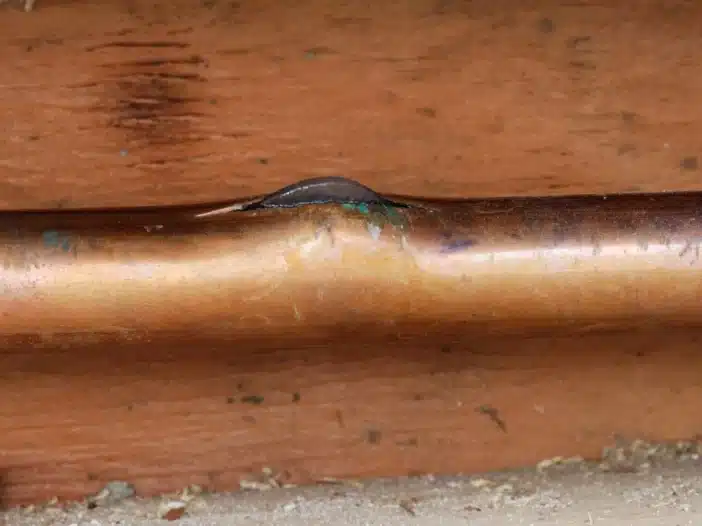Wait, you mean in 2024, we still face the threat of frozen pipes? How can that be? That’s so….2010. Unfortunately, people deal with frozen pipes more often than we’d like to imagine. It’s an expensive problem to deal with, and at the same time, with a little bit of foresight, it’s a challenge that can be avoided.
As much as the Eco Plumbers, Electricians, and HVAC Technicians like to visit with our customers, there are better circumstances we’d like to get together. When water freezes in your pipes it can cause a range of problems, from reduced water flow to the worst-case scenario, burst pipes and water damage.
You can take some steps before Old Man Winter sets in to ensure that your water keeps flowing and the only ice in your house comes from your freezer to freshen up your beverage.
There are a few scenarios that can lead to frozen pipes:
- Nanook of the North – It’s so cold outside, I mean, like, even the Eskimos are running for shelter. When temperatures are subfreezing, meaning below 32 degrees, and remain that low for long periods of time, water in your pipes can freeze.
- You Didn’t Cover it well enough – Some homes have pipes located in unheated areas. If those pipes are not insulated properly, water can freeze in them.
- Fill in the Gaps – on occasion, there are exterior openings, such as cracks or gaps in your home’s foundation or its walls. Pipes located near these openings can freeze.
You have the Power – You Can Do This!
There are several precautions that you can take to prevent water from freezing in your pipes:
- Locate those exposed pipes in unheated areas like basements, attics, and crawlspaces and insulate them. Some common materials are foam pipe insulation or heat tape.
- Assess the exterior of your home and find those sneaky cracks and gaps in your walls or foundation. Seal them with caulk or weather stripping.
- Steady as She Goes – maintain a consistent temperature in your home, and never set your thermostat lower than 55 degrees (even if you’re snowbirds).
- Moving water is less likely to freeze, so if you have pipes that you think are vulnerable, allow a small trickle of water to flow through faucets connected to those pipes.
- Open cabinet doors under sinks or any place where pipes are closed to let warm air circulate around those pipes.
Now What Do I Do?
You did the best you could (or you were unaware you had any challenges) and your pipes froze. What are the next best steps?
- Locate the frozen pipe. This, most likely, is where there is no water flow.
- Safely thaw the pipe: You can use a heat lamp, a hair dryer, or a portable heater to thaw the frozen section, gently. Begin at the faucet end and work your way back toward the frozen area.
- NEVER use open flames: Torches or propane heaters are not the way to thaw your frozen pipe. They can be dangerous to you and they can damage the pipes.
If you don’t feel comfortable trying to solve your frozen pipe conundrum by yourself, give a licensed plumber a call at Eco Plumbers, Electricians, and HVAC Technicians. We always come through when you need us to.
You can find us at GetEco.com











